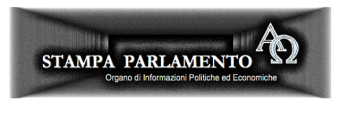After we first reported last week that US credit card debt hit a new all time high with both student and auto loans rising to fresh records with every new report…

… it won’t come as a surprise that according to the just released latest quarterly household debt and credit report by the NY Fed, Americans’ debt rose to a new record high in the second quarter on the back of an increase in every form of debt: from mortgage, to auto, student and credit card debt. Aggregate household debt increased for the 12th consecutive quarter, and are now $164 billion higher than the previous peak of $12.68 trillion set in Q3, 2008. As of June 30, 2017, total household indebtedness was $12.84 trillion, or 69% of US GDP: a $114 billion (0.9%) increase from the first quarter of 2017 and up $552 billion from a year ago. Overall household debt is now 15.1% above the Q2 2013 trough.

Mortgage balances, the largest component of household debt, increased again during the first quarter to $8.69 trillion, an increase of $64 billion from the first quarter of 2017. Balances on home equity lines of credit (HELOC) were roughly flat, and now stand at $452 billion. Non-housing balances were up in the second quarter. Auto loans grew by $23 billion and credit card balances increased by $20 billion, while student loan balances were roughly flat.
- Confirming the slowdown in mortgage activity, mortgage originations in Q2 declined to $421 billion from $491 billion. Meanwhile, there were $148 billion in auto loan originations in the second quarter of 2017, an uptick from the first quarter and about the same as the very high level in the 2nd quarter of 2016.
- Auto loan balances increased by $23 billion, continuing their 6-year trend. Auto loan delinquency rates increased slightly, with 3.9% of auto loan balances 90 or more days delinquent on June 30. The aggregate credit card limit rose for the 18h consecutive quarter, with a 1.6% increase.
- Outstanding student loan balances rose modestly, and stood at $1.34 trillion as of June 30, 2017. The second quarter typically witnesses slow or no growth in student loan balances due to the academic cycle. As discussed previously, a perilously high 11.2% of aggregate student loan debt was 90+ days delinquent or in default in 2017 Q2.
In a troubling development, the report noted that the distribution of the credit scores of newly originating mortgage and auto loan borrowers shifted downward somewhat, as the median score for originating borrowers for auto loans dropped 8 points to 698, and the median origination score for mortgages declined to 754. For now this credit score decline has not impacted the credit market: about 85,000 individuals had a new foreclosure notation added to their credit reports in the second quarter as foreclosures remained low by historical standards.
And while much of the report was in line with recent trends, and the overall debt that was delinquent, at 4.8%, was on par with the previous quarters, the NY Fed did issue a red flag warning over the transitions of credit card balances into delinquency, which the New York Fed said “ticked up notably.”
Discussing the troubling deterioration in credit card defaults, first pointed out here in April, the New York Fed said that credit card balance flows into both early and serious delinquencies increased from a year ago, describing this as “a persistent upward movement not seen since 2009.” As shown in the chart below, the transition into 30 and 90-Day delinquencies has, over the past two quarters, surged to the highest rate since the first quarter of 2013, suggesting something drastically changed in the last three quarters when it comes to US consumer behavior.
“While relatively low, credit card delinquency flows climbed notably over the past year,” said Andrew Haughwout, senior vice president at the New York Fed. “This is occurring within the context of loosening lending standards, as borrowers with lower credit scores recover their ability to access credit cards. The current state of credit card delinquency flows can be an early indicator of future trends and we will closely monitor the degree to which this uptick is predictive of further consumer distress.”
That bolded statement, is the first official warning by the Fed that the US consumer is sick, and the Fed has no way reasonable explanation for this troubling jump in delinquencies. Timestamp it, because this will certainly not the be the last time the Fed warns about the dangerous consequences of all-time high credit card debt.
As for the “further uptick in consumer distress”, we are just guessing but the fact that credit card defaults are jumping at a time when sales at fast food and other restaurants have declined for 17 consecutive quarters, and when $250 billion in US household savings was just “revised” away, may all be connected.
Fonte: qui
 Household Debt At Record Level – Bigger Than China’s GDP
Household Debt At Record Level – Bigger Than China’s GDP
The economy continues to grow weaker despite all of the Fed, Wall St. and media propaganda to the contrary. The economy is growing weaker due to the deteriorating financial condition of the consumer, which is by far the biggest driver of GDP in the United States. The only way the policy-makers can avoid a systemic collapse is “helicopter” money printing, in which printed cash or digital currency credits is, in some manner, distributed to the populace.
The Fed reported that non-revolving consumer debt (not including mortgage debt) hit $2.6 trillion at the end of the first quarter. Student loans outstanding hit a record $1.44 trillion. Recall that at least 40% of this debt is in some form of delinquency, default or “approved” non-pay status. Auto loans hit a record $1.2 trillion. Of this, at the very least 30% is subprime. A meaningful portion of the auto debt is of such poor credit quality when it’s issued that it is not even rated. Credit card debt is now over $1 trillion dollars and at a record level. The average outstanding balance per capita is $9600 per card for those who don’t pay in full at the end of the month. Just counting the households with credit card debt balances, the average balance per household is $16,000. The average household auto loan balance for all households with a car loan is over $29,000.
The data shows a consumer that is buried in debt and will likely begin to default at an accelerating rate this year. In fact, I’d call these statistics an impending economic and financial disaster. Credit card companies are already warning about credit charge-offs. Synchrony (which issues credit cards for Amazon and Walmart) reported that its credit card charge-offs would rise at least 5% in 2017. Capital One (Question: “What’s in your wallet?” – Answer: “Not money”) reported that credit card charge-offs soared 28% year over year for Q1. Synchrony, Capital One and Discover combined increased their Q1 provision for bad loans by 36% over last year’s provisions taken.
The monthly consumer credit report last week showed a $12.4 billion increase over May. A $16 billion increase was expected by Wall St. Keep in mind that every month of credit expansion is another new all-time high in consumer debt. Credit card debt outstanding increased by $4.1 billion, which is troubling for two reasons. First, it’s likely that financial firms are lending to less than qualified borrowers, as evidenced by the rising credit card delinquency and charge-off rates. Second, given the declining household real disposable income and savings rate, it’s likely that households are using credit card debt to pay for non-discretionary expenses. The smaller than expected increase in credit is being attributed primarily to slower growth in auto loans.
Speaking of the auto industry, Bloomberg reported last week that auto dealers, in a desperate bid to increase sales and reduce inventory, cut prices on new cars and trucks in July by the most since March 2009. It also reported that used car prices dropped 4.1%. This graph from Meridian Macro Research captures the rapid deterioration auto sales (click to enlarge):

The chart shows rate of change in motor vehicle freight carload volume on a year over year basis vs. per capita auto sales. As you can see, the last time these two metrics were showing negative growth (a decline) and heading lower was 2008. The entire “boom” in auto sales since the “cash for clunkers” program, which ran from July 2009 to November 2009, has been artificially created by a massive expansion in Government-enabled credit and Fed money printing. The impending crash in the auto industry is unavoidable unless the Government resorts to outright “helicopter” money printing (i.e. giving cash directly to households rather than to the banks).
One of the best barometers of consumer financial health is restaurant sales, which are entirely dependent on the relative level of household disposable income that can be allocated to non-discretionary expenditures. Black Box Intelligence’s monthly restaurant industry snapshot, released Thursday, showed another monthly decline in restaurant sales and traffic – this one steeper than the past couple of months. I believe this is the 17th successive monthly year-over-year decline. Comp sales (year over year for July) were down 2.8% and comp traffic dropped 4.7%. The latter is more significant, as it better represents actual sales volume because dollar sales are boosted by price inflation. In contrast to these Real World numbers, the BLS reported in its employment report for July that the restaurant industry created 57,000 new jobs. This is not just flagrant misrepresentation of reality for propaganda purposes, it’s outright fraud.
In terms of specifics with the July restaurant numbers, sales declined in 183 of the 195 markets covered by the Black Box Intelligence survey. The worst region was the midwest, where sales declined 3.6% and traffic dropped 5.2%. The best region was California, with sales down 0.7% (price inflation) and traffic down 3.6%. Not surprisingly, the fine dining category outperformed the other industry segments, as it reflects the growing disparity in income and wealth between the upper 1% and the rest. The quick service segment turned in the worst performance.
The above analysis was excerpted from the Short Seller’s Journal, which is dedicated to digging truth out from the Government, Fed and financial media propaganda. Contrary to the message conveyed by the stock market’s inexorable climb higher, the average U.S. household, along with the Government at all levels (Federal to local municipal), is on the ropes financially and economically. The Short Seller’s Journal exposes this reality. Hundreds of stocks are plumbing 52-week and all-time lows. The Short Seller’s Journal helps you find these stocks before they plunge and take advantage of the most overvalued and most inefficiently-priced stock market in history. You can find out more here: Short Seller’s Journal information.






 Attendere un attimo...
Attendere un attimo...


